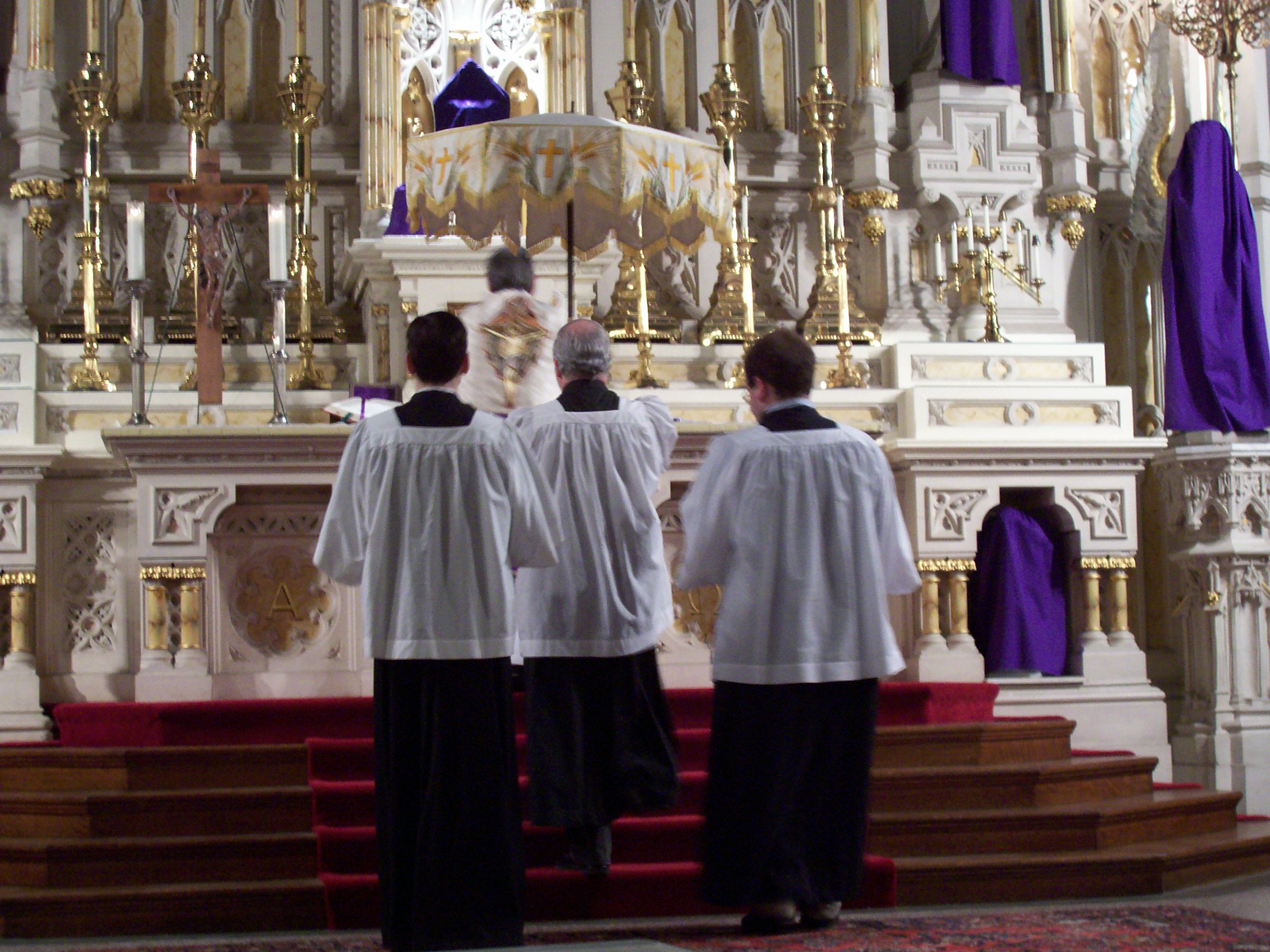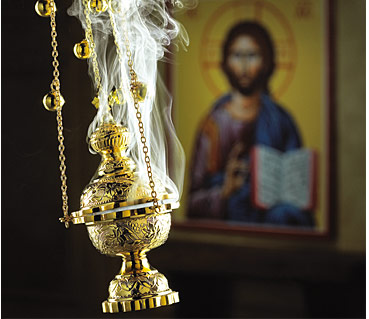Aspects of Church Life
On this page you will find an explanation of different aspects of church life, what things are and what they are used for...

The Ombrellino is a canopy which is carried over the Blessed Sacrament as a mark of honour when the Sacrament is carried solemnly in procession. One of the Holy Days this happens on is the Feast of Corpus Christi.
The Blessed Sacrament Altar is where the Blessed Sacrament is reserved for the Communion of the sick, and is also a focus for the devotion of the Faithful. It is kept in the Tabernacle, which is covered with a veil, and at which a white lamp burns to denote the Presence of Christ in his Sacrament.
The Monstrance is used to carry the Sacrament of Christ’s body in procession and to display the Sacrament for the adoration of the faithful at the service of Benediction.
Icons are holy pictures depicting Christ, Our Lady, the Saints, and various important scenes from the Gospel story. They help focus the prayers, devotions and prayers of the faithful. They are important in the spiritual life of the Eastern Churches and increasingly used by Western Christians in their prayers. They are displayed for the veneration of the faithful on appropriate Holy Days.
Incense is made from various aromatic resins and gums taken from trees. When burned it gives off a scented smoke. It is burned in a thurible with charcoal because it is very difficult to burn on its own. The most natural time to burn incense is when the Lord comes among us in person in the Eucharist. It is used particularly during the entrance hymn, at the reading of the Gospel, and at the Offertory as the gifts are prepared and offered to the Lord. The Catholic Church in England used incense throughout its history until the mid 17th century, when its use then declined. Since the mid 19th century its use has increased. Nowadays, many churches (particularly Anglo-Catholic ones) have re-discovered the benefits to be gained from the use of incense as part of their worship.
Vestments are part of the uniform that the Priest wears in church. Black vestments are used for Christian funerals and for Masses offered for the dead, called Requiem Masses. Red vestments are used on those Holy Days which observe the suffering and Death of the Lord (Palm Sunday, Good Friday, and Holy Cross Day) and for the Feasts of Martyrs, those who shed their blood for Christ. Purple vestments are worn during the penitential seasons of Advent and Lent when we prepare to celebrate Christmas and Easter respectively. Gold and white vestments are used for the Feasts of the Lord and of Our Lady, and for those Saints who were not Martyrs. They are also used throughout the seasons of Christmas and Easter. Green vestments are worn on all ordinary days of the year which are not Holy Days and which do not fall in the seasons of Advent, Christmas, Lent and Easter.
Stations of the Cross are, collectively, a series of icons or statues, normally 14, which depict the last days of Jesus and his Crucifixion. Stations of the Cross is also a ceremony based on prayer at each of these icons / statues.




